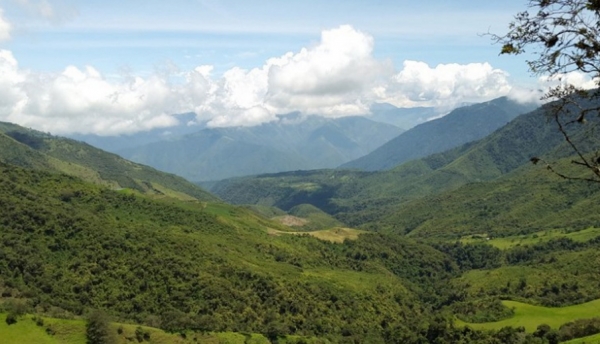How sensitive are Andean forests to climate change?

During recent years we have received large amounts of information about how increased environmental temperatures are modifying prominent features of our planet. The general public is particularly aware of glacier melting in the poles and at high elevation mountains. However, there is a general lack of information on how living organisms are responding to climate change.
During recent years we have received large amounts of information about how increased environmental temperatures are modifying prominent features of our planet. The general public is particularly aware of glacier melting in the poles and at high elevation mountains. However, there is a general lack of information on how living organisms are responding to climate change. Understanding biodiversity responses to climate change is certainly a complex task because it requires continuous field monitoring, proper data management and analysis. Further, ecological trends found at a single study site cannot be extrapolated to the landscape. Thus, isolated field studies need to be placed in a broader context to understand how biodiversity is responding to global changes.
A group of scientists working under the umbrella of the “Red de Bosques Andinos” recently published a study that investigates how environmental factors influence forest dynamics. This effort involved 22 scientists working in the region, and synthesized information obtained in 63 permanent plots distributed from Colombia to Argentina. The rational behind this study was that understanding what environmental factors determine rates of tree mortality and recruitment would allow us to predict how changes in these factors will affect the structure and functioning of the system.
The findings of the study revealed that Andean forests are highly sensitive to variation in environmental temperature. Forests at the lower end of the elevation gradient (therefore, with higher environmental temperatures) are more dynamic, that is, trees are recruited and die faster than in forests at higher elevations. These forests also accumulate biomass (i.e., carbon) at higher rates compared to forests at higher elevations. In addition to these findings a worrisome trend came up: in upper elevation wet forests smaller trees had higher than expected mortality rates.
Overall, this collaborative exercise demonstrated that Andean forests are sensitive to changes in environmental temperature. Thus, future increases in temperature will shorten the life spans of Andean trees, which may lead to changes in the structure and functioning of these systems. Forest dynamics, however, involve complex processes that may result in many-faceted ecological responses. Indeed, it appears that upper elevation wet forests are experiencing high rates of tree mortality, possibly due to the extremely high temperatures recorded during the last decade. High tree mortality may substantially alter the delivery of services related to biodiversity and ecosystem functioning, including products for extractivism (e.g., timber, fibers, food, and medicine), recreational services, and water provision.
Research networks are emerging worldwide as a way in which scientists can collaborate and develop research relevant to understand how ecological systems are changing under modified climate conditions. The ‘Red de Bosques Andinos’ will play a critical role to move forward our knowledge on how this biodiversity hotspot is responding to global climate change.


Facebook comments